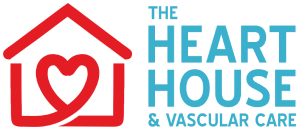Venous Ulcers
What are Venous Ulcers?
Venous ulcers are caused by a condition called venous insufficiency. Venous insufficiency occurs when the veins in the legs do not function properly and blood is not able to return to the heart efficiently. This can lead to pooling of blood in the legs, which can damage the skin and cause ulcers to form.
Causes & Symptoms of Venous Ulcers
Venous insufficiency disrupts the regular blood flow in the legs, giving rise to venous ulcers. This condition can be triggered by various factors, encompassing age, gender, family history, occupation, obesity, smoking, and varicose veins. As individuals age, the likelihood of venous ulcers becomes more pronounced, with those over 60 being at a higher risk. Women are also more susceptible to developing venous ulcers than men.
A familial history of venous ulcers enhances the chances of their occurrence in an individual. Certain occupations that involve prolonged periods of standing, such as teachers and nurses, elevate the risk of developing venous ulcers. Obesity adds an extra burden on blood circulation, increasing the vulnerability to venous ulcers. Smoking, with its detrimental impact on vein valves, amplifies the risk of venous ulcers. Although varicose veins themselves are not a direct cause of venous ulcers, they can heighten the risk of their development.
Symptoms of Venous Ulcers
- Open Sores
Venous ulcers manifest as open wounds, typically found on the lower leg, ankle, or foot. These wounds may be painful and slow to heal. - Skin Changes
The skin surrounding the ulcer site can exhibit a range of changes, including discoloration, hardening, and inflammation. These changes are indicative of compromised blood circulation. - Swelling
Individuals with venous ulcers often experience swelling, particularly in the lower leg and ankle. The pooling of blood contributes to this symptom. - Persistent Pain
Venous ulcers are often accompanied by persistent pain, which can vary in intensity and may worsen when standing or walking. - Itching and Tingling
Sensations of itching and tingling may arise in the area surrounding the ulcer. These sensations are often attributed to impaired blood flow and skin damage. - Discharge
Venous ulcers can produce a foul-smelling discharge, indicating the presence of infection or compromised wound healing. - Delayed Healing
The chronic nature of venous ulcers means that they tend to heal slowly and may recur if not managed effectively.
Testing & Diagnosis for Venous Ulcers
Accurate diagnosis is crucial for the effective management and treatment of venous ulcers. In addition to clinical assessments, various diagnostic tests may be conducted to provide a comprehensive understanding of the underlying causes and severity of the venous ulcers. These tests include:
- Doppler ultrasound
This non-invasive imaging technique evaluates blood flow in the veins and identifies any obstructions or abnormalities that could contribute to venous insufficiency. - Duplex ultrasound
A combination of traditional ultrasound and Doppler ultrasound, this test provides detailed images of blood flow and vein structure, aiding in the assessment of venous reflux and valve dysfunction. - Venous refill time test
This test measures how quickly blood returns to the lower leg after being drained by raising the leg. Prolonged refill time can indicate venous insufficiency. - Ankle-brachial index (ABI)
ABI is a comparison of blood pressure readings in the ankles and arms. It helps assess blood flow and detect potential blockages. - Venogram
In more complex cases, a venogram involves injecting a contrast dye into the veins and using x-rays to visualize blood flow and identify any obstructions.
Treatments for Venous Ulcers
The primary objective of venous ulcer treatment is twofold: enhancing blood circulation to the legs and fostering the healing process of the ulcer. Treatment options are tailored to the severity of the ulcer and can encompass a range of approaches, ensuring optimal outcomes for patients. Varied treatment options include:
- Compression Therapy
This technique involves the utilization of specialized compression stockings or bandages. By exerting gentle pressure on the legs, compression therapy encourages improved blood circulation, aiding in the healing of ulcers. - Leg Elevation
Elevating the legs above the level of the heart serves as an effective strategy to mitigate swelling and bolster circulation. This simple yet impactful approach can significantly contribute to the healing process. - Dressings
Dressing the ulcer is paramount in safeguarding it against infection while facilitating the healing process. These dressings create an optimal environment for tissue regeneration and ulcer closure. - Medications
An array of medications can be employed to address various aspects of venous ulcer treatment. Antibiotics play a crucial role in preventing infections that can impede healing, while diuretics assist in reducing swelling and enhancing circulation. - Surgical Intervention
In certain scenarios, surgical intervention may be warranted. Surgical procedures can involve the removal of the ulcer itself or the implementation of techniques to enhance circulation to the legs. These interventions are typically considered for cases that require more targeted and intensive treatment.
Photo Gallery
Video Gallery
Testimonials
Photo Gallery
Meet Your Cardiovascular Specialists
In Search of Care? Request a Consultation Today


 Fax: 856-547-5337
Fax: 856-547-5337
